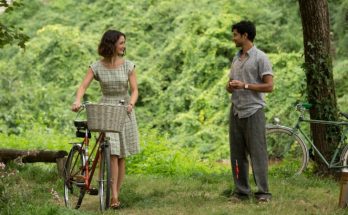
Harlem is a large neighborhood within the northern section of the New York City borough of Manhattan. Since the 1920s, Harlem has been known as a major African-American residential, cultural and business center.
Few realize that Harlem was once home to a community of Bengali merchant seamen who first arrived in New York City in the 1920s. When the British steamships worked on docked in New York, the seamen went ashore, without visas, and did not return.

In the US illegally, they found employment off-the-books as dishwashers and doormen in downtown New York hotels. Uptown, in Harlem, the so-called ‘Black Mecca’, they found rooms to rent and a refuge from racism and the colour bar.
Soon, they married and started families with African American, West Indian, and Puerto Rican women. Some of the ex seamen started their own small businesses. Several sold halal hot dogs on pushcarts on Harlem streets. While others opened restaurants selling Indian food.
The best known of these was Ameer’s on 127th Street, which was a favourite eating place of Black Muslim leader Malcolm X, and Eshad Ali’s Bombay Indian Restaurant on 125th Street, which was a popular spot in the 1950s for jazz musicians like trumpeter Miles Davis.
And though South Asian migrants were part and parcel of life in Harlem for many years, few outsiders knew anything about this history until recently, when descendants of the migrants, along with the author of a book about them, Bengali Harlem and the Lost Histories of South Asian Americacelebrated this unique history in an event at the New York Public Library’s Schomburg Centre for Research in Black Culture in Harlem on 6 April.
The event, which was sold out, included a screening of the documentary ‘In Search of Bengali Harlem.’ This was followed by a panel discussion which featured descendants of Bengali settlers in Harlem. The event also included a reading from Indian-American author and MIT Professor Vivek Bald’s book Bengali Harlem and the Lost Histories of South Asian America
The book traces the history of Bengali men in New York, and also traces the histories of Indian Muslim men who settled in African American neighbourhoods in other US cities, such as Tremé in New Orleans, Louisiana in the American South and the Black Bottom neighbourhood in Detroit, Michigan, in the American Midwest.
“While the US government was criminalising and excluding immigrants of colour from entering the country” says Vivek Bald, referring to immigration laws which restricted non white entry into the US until 1965, “it was African-Americans, people who were themselves marginalized, who” Bald says, “embraced those South Asians who did manage to get in and gave them shelter.”
Aladdin Ullah is the son of one of the Bengali seamen who jumped ship, illegally, and found refuge in Harlem in the 1920s.
Aladdin says his father quickly married a local Harlem woman and found work as a dishwasher. Aladdin, who is 50 and still lives in Harlem, remembers his father, Habib, setting out for New York’s Indian Seamen’s Club dressed in a beautiful blue kurta. The world in which he and his family lived in was, Aladdin Ullah says, a unique multiracial community of South Asian ex-seamen, their Black and Hispanic wives, and their mixed-race children.
“People think that Asians all came here after 1965, when immigration opened up” says Aladdin dismissively. “They think all South Asians are engineers, went to Ivy League schools, and are members of the ‘model minority.’”
Railing against this stereotype of South Asians in America, Aladdin Ullah, who is an actor and playwright, decided to turn his father’s story into a powerful one-man show called ‘Dishwasher Dreams.’ “I’m not a member of the ‘model minority’” says Aladdin, happily. “I’m part of the South Asian labourers and dishwashers who came here long, long ago and who found a good life among African-Americans in Harlem.”
Tweet @losthistories





